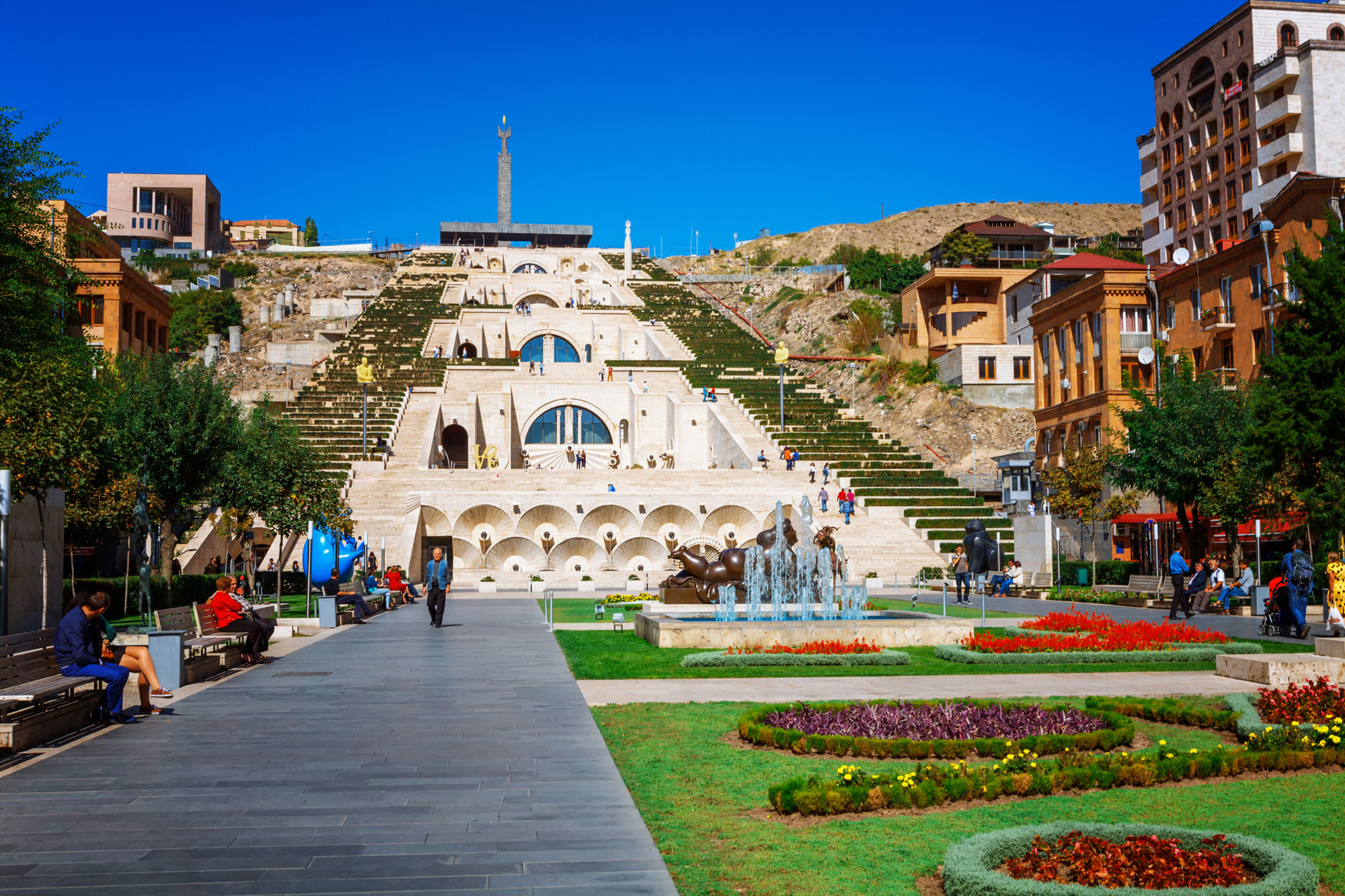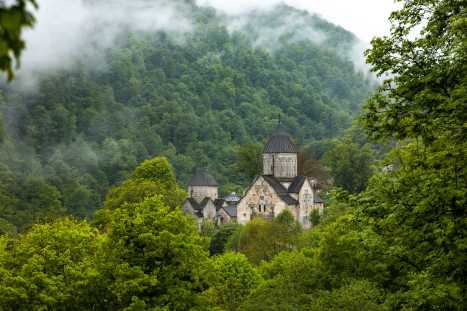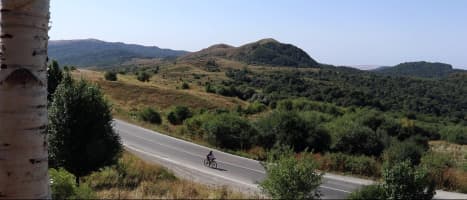Blog
Yerevan, Armenia: A New Start For The Trans-Caucasus Cycling Adventure
For 2024, we have moved the start line of the Trans-Caucasus Cycling Adventure to Yerevan, Armenia. The country’s capital since 1918, it is one of the world’s oldest cities, having been inhabited since 782 BC. Participants should seriously consider spending a few days exploring this fascinating city before the start of their cycling adventure through Armenia, Georgia and Turkey. Here are 10 sights not to be missed.
1 – The Matenadaran

Armenia has an ancient literary history but over the centuries, its libraries have been ransacked by invaders and many treasures were lost or destroyed. In 1959, the government decided to build a central location for the country’s manuscripts and other documents. Hence, the Matenadaran. It holds over 20,000 manuscripts, including the oldest Armenian manuscript in the world, the 7th century Vehamor Gospel.
2 – Katoghike Church

This is the church within a church and was originally built in the 13th century. In the 1600’s another, larger church was built over this one and in 1936, when the larger structure was being torn down for redevelopment, this tiny ancient church was ‘discovered’. After a public outcry, the small church was saved and religious services now once again take place here.
3 – Sergei Parajanov Museum

Have you ever heard of the 1969 film, The Color of Pomegranates directed by the Armenian director Sergei Parajanov? I haven’t and am pretty sure most of you don’t recognize the names either. Yet, according to Wikipedia, “Parajanov is regarded by film critics, film historians and filmmakers to be one of the greatest and most influential filmmakers in cinema history.” A visit to this museum will enlighten you to his story under Soviet rule which included being persecuted and imprisoned and introduce you to his impressive body of work in cinema.
4 – Spider Statue

Yerevan has a surprising amount of public art and one of the most striking pieces is the Spider statue, centrally located in Charles Aznavour Square (named for the French Armenian singer). It is the work of Armenian artist Ara Alekyan and was created after the 1988 earthquake that devastated the country. He saw in the wreckage of the city all sorts of metal debris which he then collected and welded together to create this distinctive piece.
5 – Cafesjian Center for the Arts & Yerevan Cascade

A giant limestone staircase with 572 steps, the Cascade connects 2 distinct neighbourhoods in downtown Yerevan. It is decorated with gardens, fountains and sculptures and offers visitors great views of both the city and of distant Mt Ararat. The Cafesjian Centre for the Arts is located in and around the Cascade and offers up displays of contemporary art. When it opened the New York Times commented that is was, “a mad work of architectural megalomania and architectural recovery, (…) one of the strangest and most spectacular museum buildings to open in ages.”
6 – Blue Mosque

In this city of churches, the Blue Mosque, built in 1765, is the only active Islamic place of worship in Yerevan. During the Soviet years, it was not operational but with the help of the current Iranian government, it now functions as a Shia mosque once again for the country’s Muslim community. It is well worth a visit for its elaborate design and tranquil grounds.
7 – Vernissage Market

This open-air arts and crafts market offers up endless possibilities for shoppers. The items for sale are usually made by the vendors who have them on display but the quality can vary widely so pay close attention. You can purchase carpets, Soviet-era memorabilia, old books, paintings and just about anything else you can imagine. The market is open daily but the number of vendors increases on the weekend. Bargaining is expected and you may have to down a shot of vodka to seal your deal.
8 – The Garni Temple

Located about a 40 minute drive (or 2 hour bike ride!) from Yerevan, the Garni Temple is a fine example of Christian Armenia’s pagan past. It was built somewhere in the first century BC and was dedicated to Mihr, the pagan god of light and the sun. It was completely destroyed by an earthquake in 1679 but was painstakingly rebuilt during the years 1969 – 1975 using many of the original stones.
9 – The Pink City

Many of the buildings in Yerevan were constructed during the Soviet era and during that time a favourite construction material was something called tuff. This was a compacted volcanic ash that had a distinctive pink colour that was widely available locally. The widespread use of tuff over the years means that the city, especially at sunrise and sunset, gives off a subtle rosy glow. Visitors should try to find a suitable viewpoint at these times to see why Yerevan is referred to as the ‘Pink City’.
10 – Armenian Genocide Memorial & Museum

A sobering visit to the this memorial and museum will help people understand Armenia’s tragic past and its current outlook. It commemorates the 1915 -1922 massacre of Armenians by the Ottoman Empire. The 12 basalt slabs hovering over the eternal flame represent the western provinces lost to Turkey after World War 1 while a towering spire represents the survival of the Armenian people and their culture.
RELATED
TOUR
 REGISTER NOW
REGISTER NOW




Leave a Comment for "Yerevan, Armenia: A New Start For The Trans-Caucasus Cycling Adventure"